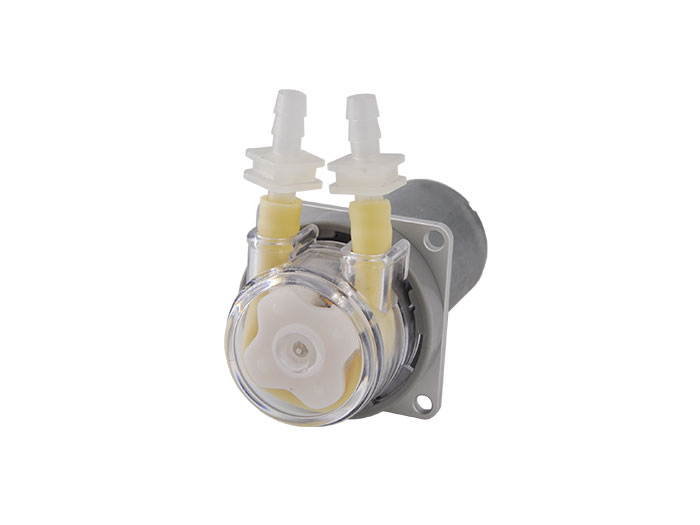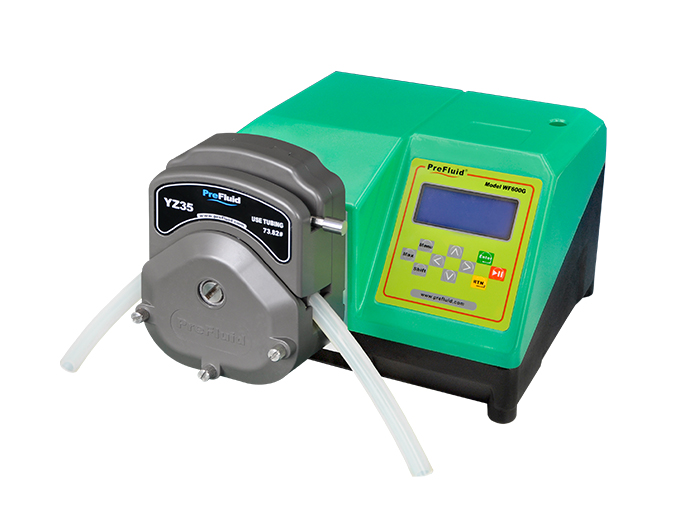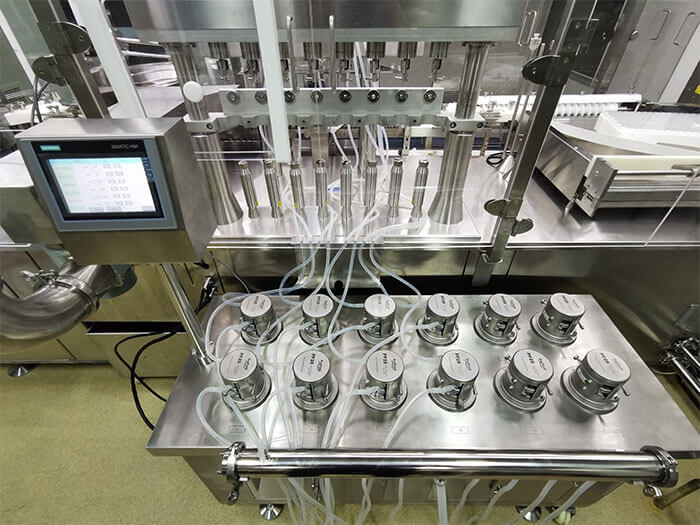How to calculate the flow rate of peristaltic pump? The peristaltic pump head can be assembled with multiple pump lines, each with a different diameter to produce a different flow rate. The larger the diameter of the same peristaltic pump head, the greater the flow generated by the peristaltic pump head, and vice versa.

I. Which parameters affect the flow rate of
Peristaltic pump?
1. Peristaltic pump pressure wheel diameter: peristaltic pump flow and peristaltic pump pressure wheel diameter is positively correlated.
2 hose diameter: peristaltic pump flow and peristaltic pump hose diameter is positively correlated.
3 speed: the flow rate of the peristaltic pump is positively correlated with the speed of the peristaltic pump.
4 liquid viscosity: the higher the viscosity, the smaller the flow
5. Liquid proportion: the larger the proportion, the smaller the flow
6. Suction range: the higher the suction range, the smaller the flow
7. Head: when the peristaltic pump is used at rated pressure, the flow will not be affected by the head, but if the rated pressure and the limit head of the peristaltic pump exceed the rated pressure and the limit head of the peristaltic pump will increase the hose of the peristaltic pump, leading to the thickness of the flexible tube and the backflow of the peristaltic pump.
8 liquid temperature: the flow of peristaltic pump is proportional to the flow of liquid, that is, the better the flow, the greater the flow. Usually the higher the temperature, the lower the liquid viscosity, the better the fluidity, the higher the flow of peristaltic pump.
Two. Peristaltic pump flow calculation method
The peristaltic pump does not consider the effect of liquid viscosity on the flow in the ideal state, if every minute to produce 10ml flow, that is, 10ml/min, the flow of N turns per minute is equal to 10 times N.
Of course, the reality is a little different from the ideal, mainly in the following ways:
1. Because the peristaltic pump inhales the liquid through the rebound of the pump pipe, the rebound of the peristaltic pump hose needs a certain time. The thicker the fluid, the longer it takes to bounce back. Therefore, when the pump rebound time is less than one distance displacement time of the peristaltic pump (if the wheel of the peristaltic pump consists of two wheels, the two distance arcs are 180 degrees, when the wheel rotates half a turn, the time required is the distance displacement time, the higher the speed, the shorter the time). The relation between flow rate and velocity of peristaltic pump is the relation between linear growth. If the time needed for the springback displacement is greater than the distance of time, namely the peristaltic pump hose before fully rebound again by compression, the traffic will be less than the pump pipe produced by the rotation of peristaltic pump each fully rebound when the flow rate. Of course, if the speed of the peristaltic pump is fixed, then each circle is also fixed.
2. The greater the outlet back pressure, the greater the outlet flow. The reason is that the increase in outlet pressure will increase the pump line and the outlet liquid will regurgitate. If the outlet pressure is greater than the pressure generated by the pump, the liquid will not be able to drain, resulting in complete backflow.
Conclusion: Therefore, when calculating the flow rate of peristaltic pump, the influence of the increase of peristaltic pump speed and liquid viscosity on the rebound of the hose should be considered. If the speed of the peristaltic pump is constantly changing during transport, it cannot be calculated entirely on the basis of a simple product relationship. In general, experience tells us that liquids with low liquid ratios can be calculated based on product relationships, and pumps with less than four runners can be transported quickly. If the viscosity is high, consider reducing the experience rate.



